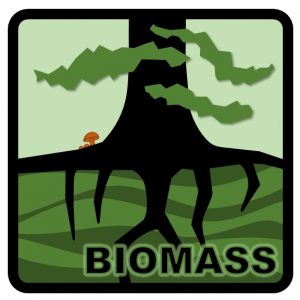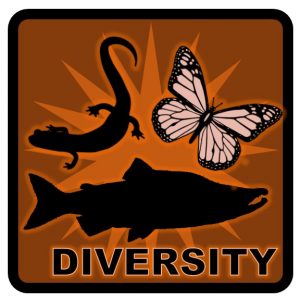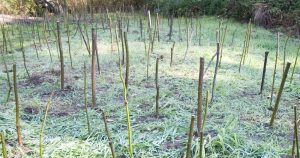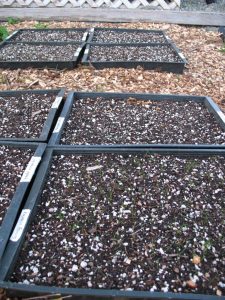 Civilizations degrade ecological systems. Ours is no different (see the essay on restoration for a summary.) Empowered by fossil fuels our destructive power outpaces any potential for natural recovery. We are the global keystone species, and it isn’t pretty. Our current condition is, ironically, both revealed and obscured by professional science and management.
Civilizations degrade ecological systems. Ours is no different (see the essay on restoration for a summary.) Empowered by fossil fuels our destructive power outpaces any potential for natural recovery. We are the global keystone species, and it isn’t pretty. Our current condition is, ironically, both revealed and obscured by professional science and management.
On one hand professional science is able to imagine, detect and summarize our profound modification of the surface of the earth, from our doubling of nitrogen fixation, to shifting atmospheric composition, to declining global primary productivity and biodiversity. We are surrounded by systematic detailed peer-reviewed evidence.
The language and analysis of scientific ecosystem management, on the other hand, is so arcane and inaccessible that most of our neighbors don’t know the playbook, and may not even realize they are on the team. Government information workers decipher ecosystems, and weigh social and economic significance, largely in private. We do a poor job building a shared base of knowledge.
In back rooms, lawyers leverage every uncertainty in hand-to-hand combat over risk and liability. Legalism wrestles over words and numbers. What width of forest buffer, on average over a whole landscape, lets us avoid liability for killing fish? How many cases of cancer caused by polychlorinated biphenyl ingestion can be glossed over during the next election?
Questions like these reflect the underlying pathology of our stewardship, more then reflecting the interests of people in communities. At the highest levels of leadership, we ask ourselves, “exactly how little do we have to do” or “what little more will satisfy popular demand”? A local leader doesn’t yet need a coherent ecological platform to gain and hold power. In modern environmental management, communities are not participants in a web of life, they are “interested stakeholders.”
The truth is that we have lots of restoration projects, but very few restored watersheds. Projects are occasional, while deforestation and pollution are constant and grinding. If we don’t effectively restore any one thing in particular, what are the chances of restoring the whole Salish Sea? Is ecosystem stewardship just another politicized industry and legislative product, competing in the marketplace of ideas? Do we chase after symptoms while ignoring the disease?
We need some simple ways to talk about ecosystems that help us think clearly. Understanding ecosystems doesn’t have to be complicated. The best tool does good work with the least fuss. I’d propose that three measures, tell us most of what we need to know about our stewardship of a watershed.
 1. Water
1. Water
What do we do with the rain? We can either capture and store it in wetlands, vegetation or groundwater, or we can send it as a polluted flood to the sea. Water is the first fertilizer, and our droughts are lengthening, and will bring more fire. We can directly observe our waste of water by walking the watershed in the rain. We could capture and store the rain and recover the functions of our cut forests with common tools, if it weren’t for property rights and aquatic ecosystem regulation. Learning how to protect and store the water together is our first great challenge. (Read more)
 2. Biomass
2. Biomass
The surface of the earth is cloaked and transformed by plants and their remains. Plants create soil, and I could have just said “soil” instead of biomass, but I’d be missing the forest. Our rainforest home is among the great woody carbon reserves of the earth, accumulating hundreds of tons per acre of mammoth tree boles and layered coarse woody debris. This biosphere is our home, and we are just little crawly things on its surface. Before we learned how to burn fossil fuels, we were already busy cutting forests, overgrazing hill-slopes, and turning soil to dust and pavement, mostly to grow food, house people, or feed smelters. Biomass mediates the water cycle and forms the structure in which diversity resides. Rebuilding biomass, while feeding ourselves is our second great challenge.
 3. Diversity
3. Diversity
When we restore water and biomass over a large surface of the earth, we create the conditions for life. The biota around us are a legacy from a once abundant world, that we either cherish or squander. Global ecological integrity is disintegrating from agricultural development, elimination of predators, over harvest of keystone species, chemical disruption, habitat destruction, and our assisted migration of diseases and pests. But evolution still works. As we destroy species, we diminish creation. As species form new communities, in search of new equilibria, in a new and changing climate, we are likely to experience a millennia of instability. Whether we like it or not we are no longer in control (if we ever truly were) but we do profoundly influence the processes. Stewardship of diversity will be challenging and painful, but we can look deeply at the populations that remain, and play our humble role, largely of self-restraint. Using our influence to wisely protect our evolutionary heritage is our third great challenge.
With these three goals in mind, all of us can work on our watersheds. Complexity doesn’t help. Right where we live, we are either catching more rain, or less. Our biomass reserves are increasing, or decreasing. Keystone populations are expanding, or crashing. We can map our strengths and weaknesses watershed by watershed and get to work. We can see change for better or worse, outside our door, and down the street. This doesn’t require scientists–it requires personal commitment. This is a simple thing. By retaining water, building biomass and protecting and restoring biodiversity, at a landscape scale we can build a strong foundation for the future, whatever it brings. If we fail at these three simple tasks, than we deserve the ruin that we will have earned.
A special thanks to John Liu and his vision for the simple goals of Ecosystem Restoration Camps.
Post Script – When I say “our” watersheds, I am using the possessive primarily in the sense of our responsibility. The challenge before all others is to take responsibility for our own behaviors. Without a measure of self-discipline, all will be lost. When I ask us to consider “our watersheds” I mean ALL the watersheds from which we extract or derive our sustenance. If you buy beef from Brazil, then the Amazon is your watershed too. Once you put your hand on the balance, it cannot be undone. Its the same in our forested foothills, as disposable chopsticks, disposable packaging, and disposable housing feeds the aggressive and endless clearcut in our foothill forests, reducing them to fiber factories. We cannot tend our watersheds at the expense of another, and pretend any moral foundation, nor can we adequately steward our lands where we have relinquished our sovereignty.




 The final push to get all bare stock in the ground is now. Everything left un-planted must be potted up and watered for another summer–good motivation to keep planting. Elderberry (Sambucus spp.) will break buds early and are particularly vulnerable if they unfurl leaves with weak roots. Cuttings can be thrown in the cooler to buy time.
The final push to get all bare stock in the ground is now. Everything left un-planted must be potted up and watered for another summer–good motivation to keep planting. Elderberry (Sambucus spp.) will break buds early and are particularly vulnerable if they unfurl leaves with weak roots. Cuttings can be thrown in the cooler to buy time. Bed preparation is underway for the earliest crops, if you can find a dry week to do the work. Any mulch laid in fall is now thin and rotten. Perennials that have hidden all winter may show their shoots enough to be dug and divided. Overwintering crops will also wake up soon. Any remaining root crops, often biennials by evolution, will soon begin their final expenditure. There will soon be abundant shoots and seeds from overwintering mustards.
Bed preparation is underway for the earliest crops, if you can find a dry week to do the work. Any mulch laid in fall is now thin and rotten. Perennials that have hidden all winter may show their shoots enough to be dug and divided. Overwintering crops will also wake up soon. Any remaining root crops, often biennials by evolution, will soon begin their final expenditure. There will soon be abundant shoots and seeds from overwintering mustards.